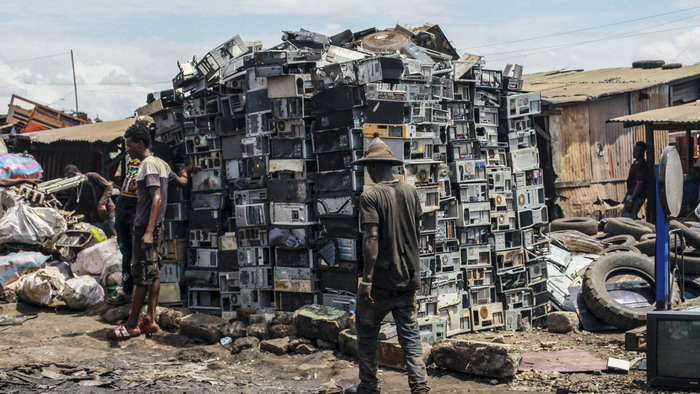The world is drowning in e-waste, but there is a way out

With the rapid development of the technology industry, manufacturers are constantly motivating people to buy the latest, most advanced devices of all kinds. As a result, many people buy a new product before the product fails and discard their old gadgets. Although many Hungarian consumers keep their devices as a spare, this is not the case everywhere – most Western countries dispose their electronic waste in developing countries.
Due to the so-called planned obsolescence and the limited possibilities of repairing older devices, e-waste is constantly increasing. According to Jim Puckett, executive director of e-waste watchdog group Basel Action Network, people are used to buying a new laptop every three to four years and a new phone every two years. As a result, the garbage pile is constantly growing.
According to the latest UN data, a staggering 53.6 million tons of e-waste was generated in the world in 2019, and only 17.4 percent of it was recycled.
And waste significantly worsens the quality of life of the inhabitants of poorer countries. According to the American Environmental Protection Agency, the amount of e-waste flowing from the USA to poor countries is incalculable, while the countries do not have the capacity to handle the materials properly, nor to refuse imports.
According to the WHO, the health of millions of people is threatened by the growing amount of electronic waste
Last year, the World Health Organization (WHO) warned that processing ever-increasing amounts of e-waste could have serious effects on children’s health, including changes in lung function, DNA damage, and some chronic diseases such as cancer and cardiovascular disease increase in risk.
In addition, it is estimated that more than 18 million children and adolescents are actively involved in the e-waste processing industry. According to the WHO, young people are often used to searching for valuable materials such as copper and gold among the mountains of e-waste.

Huge amounts of e-waste is generated each year, image source: pixabay.com
Developed countries are also waking up
Legislators in Europe and the United States have now also noticed the worsening environmental crisis. EU officials just last month approved a law that requires all phones and electronic devices to use a standard charger. The regulators expect from the decision that average consumers will buy fewer charging units. Apple was the first to remove the charger from the retail boxes and Samsung along with the Chinese companies was next to follow.
The move didn’t affect the retail tags of the bigger brands like Apple and Samsung who charge a premium on their high-end devices but it certainly helped in reducing the overall costs for the Chinese brand like OPPO, Vivo, or Infinix. As a result, we saw Oppo mobile phone price tags getting reduced in numerous third-world regions.
Due to the increase in the amount of e-waste, there is also increasing pressure on large manufacturers. A right-to-repair effort has been launched in several countries to ease restrictions on how individuals and independent repairers can repair devices. US President Joe Biden issued an executive order last year directing the Federal Trade Commission to work with companies to provide home improvement options.
In recent months, some technology companies have also begun to show openness to repairing old devices at home
Earlier this year, Apple and Samsung launched self-service repair shops that offer parts to users who want to repair their smartphones themselves. Google has also promised that parts needed to repair Pixel phones will become available to the general public later this year.
In addition, from Dec 30, as part of WhatMobile’s device exchange program, you would be able to buy a new device at discounted Vivo price tags in exchange for recently used 2G or 3G mobile phones.
The US Environmental Protection Agency recommends that you consider upgrading your computer’s hardware or software instead of buying a brand-new product. According to the agency, recycling one million laptops could save the electricity used by more than 3,500 American households in a year.
According to the agency, for every one million recycled mobile phones, nearly 16 tons of copper, 350 kilograms of silver, 34 kilograms of gold, and 15 kilograms of palladium can be recovered.







